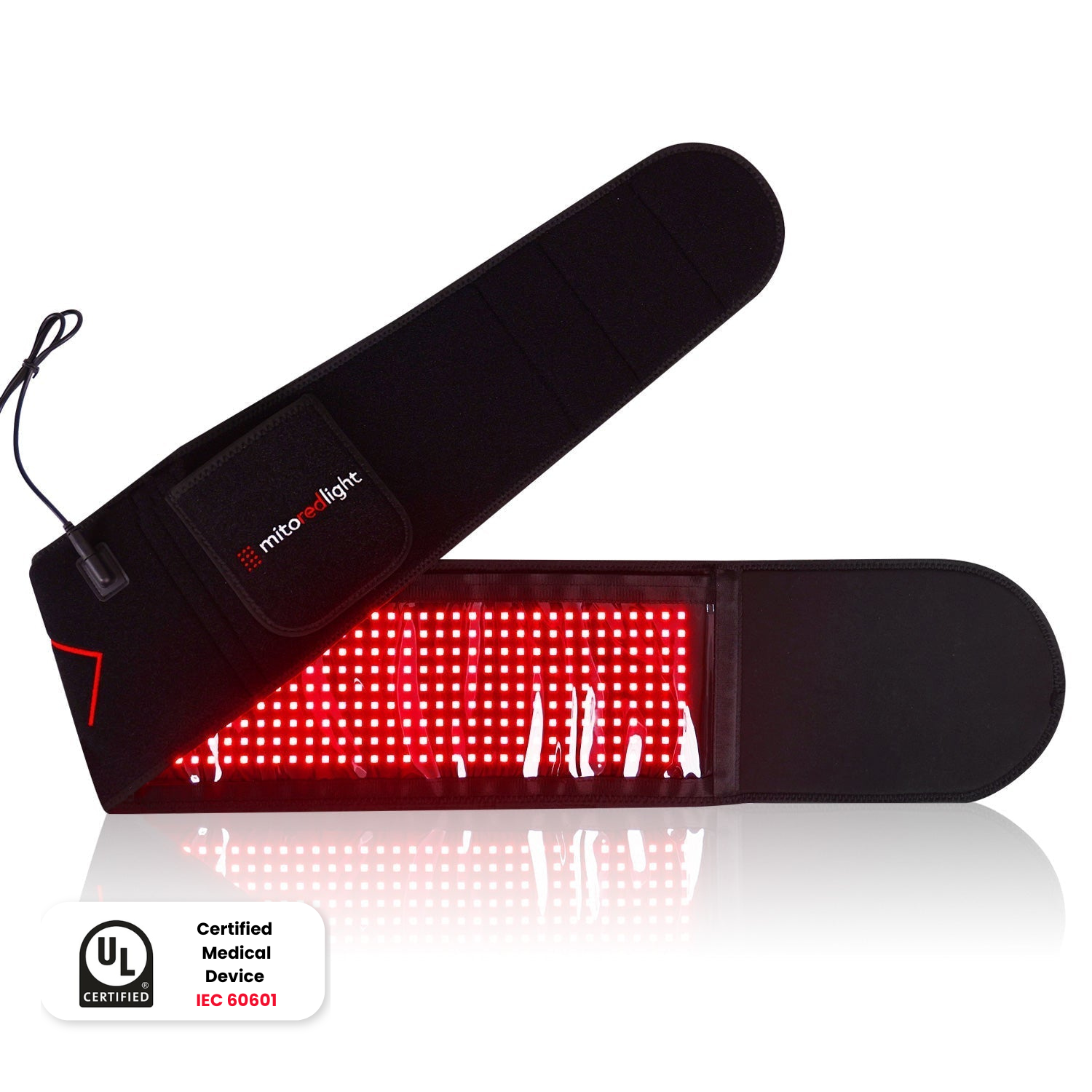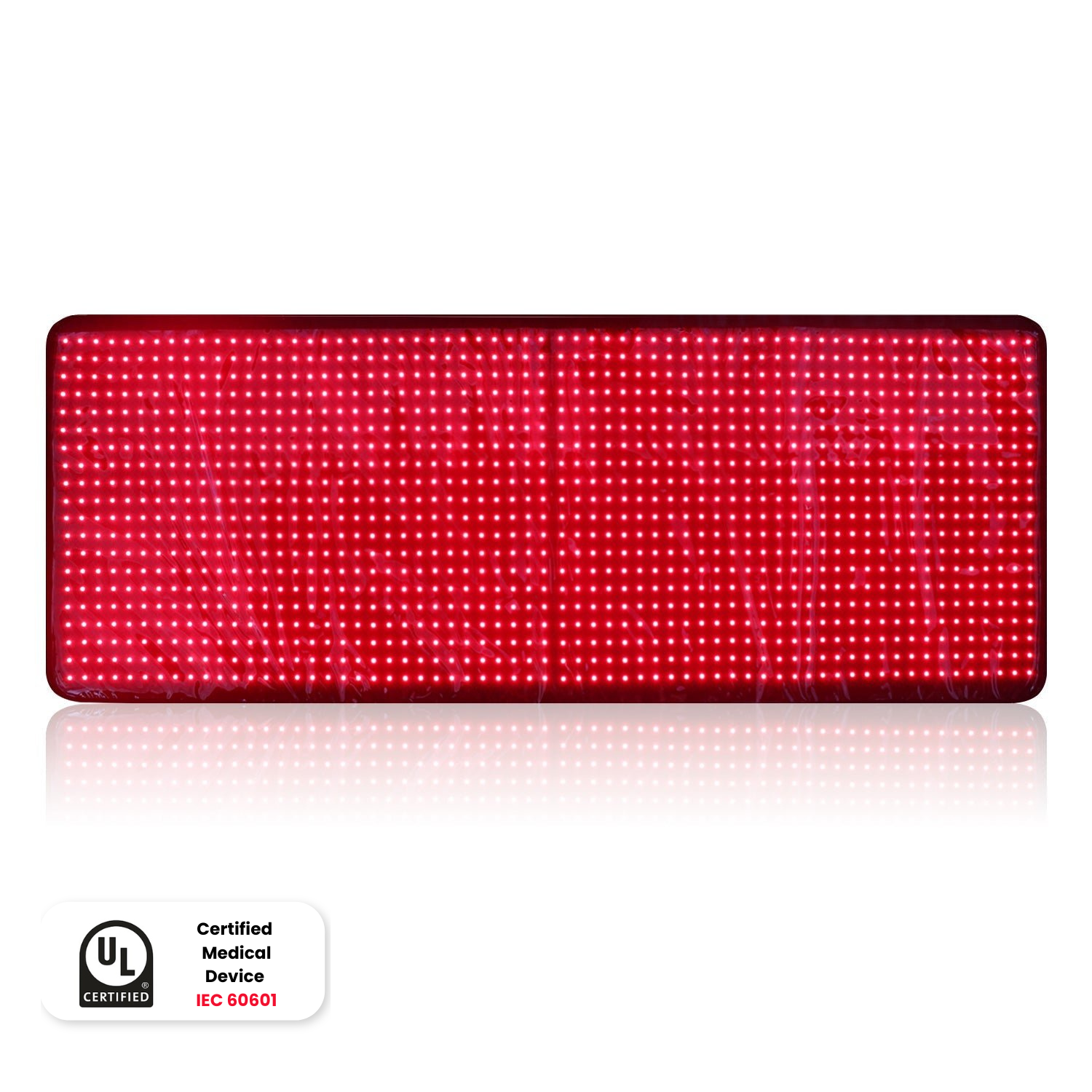DISCLAIMER: Mito Red Light devices are Class II wellness devices aimed at affecting the body through topical heating and supporting cellular function. The information provided in this article and on this site is for educational purposes only and is not intended to imply effectiveness of Mito Red Light devices for any specific application. The information provided in this article and on this site is not intended to diagnose, treat, cure, or prevent any disease, is not a substitute for consultation with a licensed medical provider and should not be construed as medical advice. Click here to read our article on potential contraindications of red light therapy..
Medically Reviewed by | Heidi Wright, BSN, RN, PCCN
Veins that swell and become painful can seriously disrupt your quality of life, especially if they cause you pain when you try to walk or sit for long periods of time. Treatment for varicose veins can be invasive and sometimes involves surgery — if you’re not ready for that type of treatment, it’s worth knowing your options.
While red light therapy cannot eliminate varicose veins, it’s a useful tool in your arsenal in terms of pain management, ulcerative skin care, and improved circulation. We’ll explain what varicose veins are, what causes them, and how red light therapy can help.
What Are Varicose Veins?
Varicose veins are veins that have become enlarged and misshapen. They can be aesthetically annoying for some, but for others they may also be very painful. They usually appear in the legs because it’s harder for blood flow to return to the heart from the lower extremities of your body.
Spider veins are a type of varicose vein, but they aren’t the same thing. Spider veins are small, visible veins that look like reddish-purplish crooked lines on the legs, face, and arms. These veins usually don’t cause pain, and can even be treated with some types of laser therapy.
What Are the Symptoms of Varicose Veins?
Mostly appearing in the legs, varicose veins are swollen, protruding from the skin, and are clearly visible.
Symptoms of varicose veins include:
- Dark blue and purple veins that are visible under the skin. They may look as though they are right under the epidermis.
- Veins that look or feel twisted, swollen in parts, or misshapen.
- Pain that makes the legs feel heavy, tired, or achy.
- Throbbing pain in the legs, especially in the calves and ankles.
- Changes in skin around the veins, especially on the shins.
These symptoms may worsen over time, especially if no action is taken to help reduce the impact of varicose veins on the body or to have them removed.
What Causes Varicose Veins?
The underlying cause of varicose veins is increased blood pressure inside the veins themselves. Veins carry blood to and from the heart, but returning blood to the heart is a more involved process.
Tiny valves within the veins work to help push blood back to the heart, but when those valves become weak, blood may begin to pool in the veins, eventually weakening the vein walls and causing veins to enlarge and twist. Think of it like a hose that has a kink in the line.
This type of vascular issue can happen due to:
- Family history. If you have family members who have varicose veins, you are more likely to have varicose veins yourself.
- Obesity. Having a BMI greater than 30 places you at a higher risk of developing varicose veins.
- Pregnancy. Circulation issues and excess pressure on the lower extremities during pregnancy can lead to varicose veins, which may or may not go away after your baby arrives.
- Age. Age plays a role in varicose veins. You’re more likely to develop them as you get older because your veins may become weaker over time.
- Standing or sitting for long periods of time. Jobs that require you to stand or sit for long periods of time can lead to the development of varicose veins.
Women are more likely to have varicose veins than men. If varicose veins go untreated, they may lead to complications like leg swelling, blood clots, ulcers on the skin, and bleeding if the vein were to burst.
How Does Red Light Therapy Work?
Red light therapy and near-infrared (NIR) light therapy are types of light therapy that involve the management of a particular concern with the use of wavelengths of light. Red light is measured between 620 nm and 7nm, and NIR light is measured between 800 nm and 900 nm).
Red light and NIR light are part of the electromagnetic spectrum of light emitted by the sun. They can penetrate the skin, and NIR light can even reach soft tissue and hard tissue. Not only do these lightwaves reach these tissues, they stimulate the very cells that make them up.
Red light therapy uses a series of light-emitting diodes (LED) that stimulate tiny organelles located inside the cells called mitochondria to produce more energy for the cell. When the cell has more energy, it can function better and carry out a higher level of cellular function.
What Are the Potential Benefits of Red Light Therapy for Vein Health?
Although red light therapy isn’t currently recognized as a treatment for the elimination of varicose veins, it can be useful as a therapy to help improve circulation and to improve skin that has been damaged due to varicose veins.
Red light is sometimes also used post-operatively to help with wound healing and to scan for the recurrence of additional varicose veins.
Skin Health
When varicose veins go untreated, the skin that surrounds them can develop ulcers and sores. These can be painful, itchy, may weep, and even shed. The use of red light therapy on this type of skin may help reduce inflammation in the immediate area and speed up wound healing.
Red light therapy targets fibroblasts in the skin responsible for collagen production and new tissue growth. Exposure to red light can help encourage the skin to heal and calm areas that are especially inflamed and uncomfortable.
Inflammation
Because NIR light can penetrate the skin, it can target the veins themselves and the tissues that surround them. Red light may be effective in targeting inflammation at the source, helping reduce it and ease discomfort and swelling.
Pain and Discomfort
The pain associated with varicose veins can range from mild to intense. NIR light can target sore legs and ankles and help reduce discomfort by improving blood flow and reducing inflammation.
Help With Circulation
One of the biggest benefits of red light for people with varicose veins is the promise of better circulation. Red light therapy helps increase blood flow to the treated areas, which is essential for helping people with varicose veins get relief.
How To Use Red Light Therapy
To use red light therapy, you’ll need to visit a doctor or medspa that has a red light therapy device available. Keep in mind that red light therapy is most effective when it is used consistently over an extended period of time.
Insurance may not cover the use of red light therapy, which means you could end up spending a lot of money on sessions. A solution? Mito Red Light. Mito Red Light offers high-quality red light therapy devices that you can use in the comfort and privacy of your own home.
You only need about 20 minutes of exposure per day. You can’t technically overdo red light therapy, but there’s no evidence that more than 20 minutes per day will get you a higher level of benefits. Investing in a red light therapy device to use at home can be an investment in relief for your sore, tired legs, and an overall improvement in your quality of life.
Get Relief the Red Light Way
While you can’t eliminate varicose veins with red light, you can definitely treat the symptoms and see improvement and feel relief. By investing in a device for red light therapy at home, you can improve other areas of your wellness, too. Mito Red Light gives you access to red light therapy panels and lights you need to target all aspects of your health.
Sources:
Varicose veins - Symptoms and causes | Mayo Clinic
Transcranial near-infrared light in treatment of neurodegenerative diseases|Frontiersin.org
Photodynamic Therapy for the Treatment of Infected Leg Ulcers—A Pilot Study | PMC































